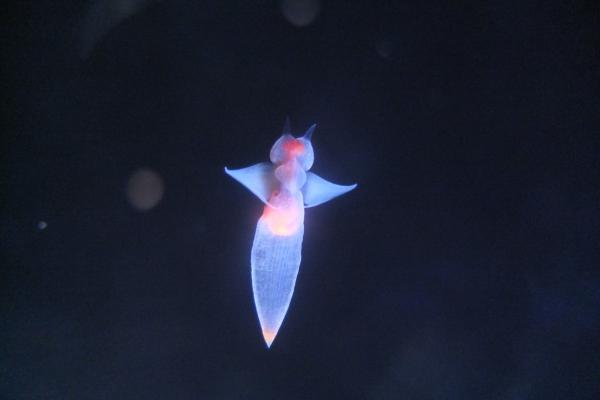The ocean is home to some of the most mysterious and captivating creatures on Earth, and sea angels (family Clionidae) are among the most enchanting. Known for their delicate, transparent bodies and graceful, wing-like appendages, sea angels are a unique group of swimming gastropod mollusks that fascinate scientists and nature lovers alike. This article provides a comprehensive overview of sea angels—their appearance, habitat, diet, life cycle, and the conservation challenges they face—using scientific accuracy.

Sea angels belong to the order Gymnosomata, under the class Gastropoda. Unlike many other mollusks, sea angels lack shells and have soft, gelatinous, and transparent bodies. Their ethereal appearance and fluttering "wings" have earned them their angelic name. Here are their key characteristics:
Transparent Body: Most sea angels are almost entirely transparent, with the orange visceral sac visible in the center of their bodies.
Wing-Like Appendages: These are actually parapodia—lateral extensions of the foot—that beat rhythmically to propel the animal through the water, giving the impression of flying.
Small Size: Adult sea angels typically reach a maximum length of 5 centimeters, but most are much smaller.
Taxonomic Diversity: There are six recognized families of sea angels, with Clionidae being the most well-known and commonly referenced.
Bilateral Symmetry: Their bodies are symmetrical, aiding their movement and buoyancy in the water column.
Shell-Less: Unlike their relatives, the sea butterflies (order Thecosomata), which have delicate shells, sea angels are completely shell-less, making them more sensitive to environmental changes.

Sea angels are distributed widely throughout the world's oceans. They can be found in polar, temperate, and tropical waters, floating in the open ocean or beneath polar ice. Their adaptability allows them to survive in various marine environments:
Geographic Range: From polar ice-covered seas to warm tropical waters.
Preferred Habitat: The mid to upper water column of the open ocean, rarely descending to the sea floor.
Adaptation: Some of the largest sea angel species are found in the cold waters of the Arctic and Antarctic, a phenomenon known as polar gigantism.
Sea angels are carnivorous predators, feeding primarily on other small planktonic animals. Their main prey is often the sea butterfly (Thecosomata), a type of shelled pteropod. Their diet and hunting techniques include:
Primary Prey: Sea butterflies, which are slower-moving, shelled relatives.
Other Food Sources: Planktonic worms, small sea slugs, and various zooplankton species.
Feeding Adaptations: Sea angels possess a radula—a rasping tongue-like organ—and specialized mouth tentacles (buccal cones) with hooks for capturing and consuming prey.
Cannibalism: In times of food scarcity, some species may resort to eating members of their own kind.
Predation Pressure: Sea angels themselves are an important food source for fish, seabirds, whales, and sharks. To deter predators, some species can release toxic chemicals.

Sea angels are simultaneous hermaphrodites, possessing both male and female reproductive organs throughout their lives. Their reproductive process involves:
Internal Fertilization: Mating partners connect their abdomens and exchange sperm using suction cups, sometimes remaining attached for hours. During this time, they can continue hunting and feeding.
Egg Laying and Development: After fertilization, eggs are laid as tiny shelled larvae. The shell is lost within a few days, and the larvae metamorphose into adults.
Metamorphosis: The transition from larva to adult includes significant changes in body form and the development of mature reproductive organs.
While sea angels are not currently listed as endangered, their survival is closely linked to the health of the ocean ecosystem—especially their prey, the sea butterflies.
Ocean Acidification: The increasing acidity of seawater, caused by higher levels of atmospheric CO₂, threatens shelled pteropods (sea butterflies). As these shells dissolve, sea angels lose a vital food source, disrupting the food web.
Ecological Impact: A decline in sea butterfly populations can lead to cascading effects on sea angel numbers and overall ocean biodiversity.
Conservation Efforts: Organizations like The Ocean Conservancy are working to address ocean health issues. Supporting such initiatives can help protect sea angels and other marine life.
Sea angels are beautiful, delicate creatures that highlight the incredible diversity of marine life. Their unique appearance and fascinating behaviors make them an important part of ocean ecosystems. However, environmental changes—especially ocean acidification—pose significant threats to their survival. Protecting the ocean and its inhabitants is a responsibility shared by all.
Bibliography
National Geographic. (2022). Rare video shows the elegant mating dance of sea angels. Available at: https://www.nationalgeographicla.com/animales/apareamiento-de-angeles-de-mar
The Ocean Conservancy. (2021). The Truth About Sea Angels. Available at: https://oceanconservancy.org/blog/2021/05/25/truth-sea-angels/
National Geographic. (2022). Animals in danger of extinction. Available at: https://www.nationalgeographic.com.es/naturaleza/grandes-reportajes/animales-peligro-extincion_12536
animal tags: Sea Angels
We created this article in conjunction with AI technology, then made sure it was fact-checked and edited by a Animals Top editor.